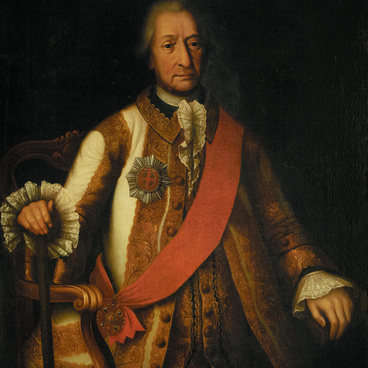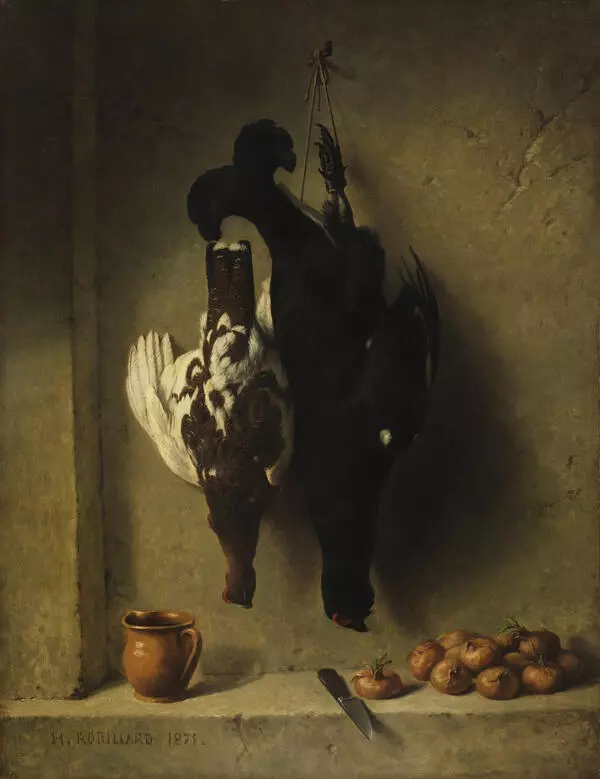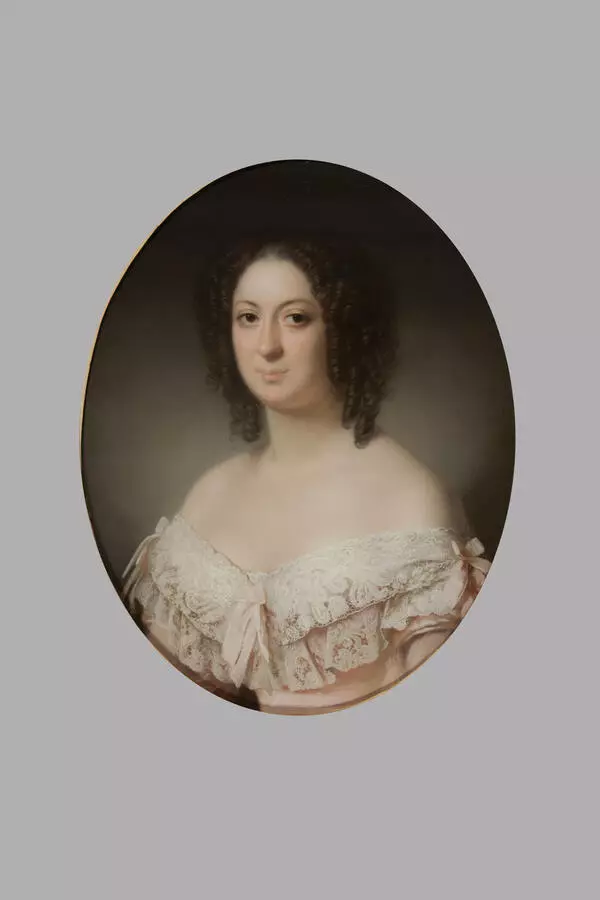The oval portrait of a woman in a memorial frame was kept in the collection of Nikanor Ivanovich Vasiliev. His collection gave rise to one of the first Kaluga museums — the Kaluga Museum of Fine Arts.
Nikanor Ivanovich was born in Kaluga in 1832. After graduating from the Medical Faculty of the Moscow University, he worked as a doctor in a number of towns in the Kaluga Governorate: Zhizdra, Medyn, and Borovsk. He also worked in Kherson, Yaroslavl, and Nizhny Novgorod.
In Nizhny Novgorod, Vasiliev met the artist and collector of antiquities Andrei Osipovich Karelin. Nikanor Ivanovich was acquainted with Nizhny Novgorod art connoisseurs — the merchants Rukavishnikov and Burmistrov, the artist Konstantin Petrovich Pomerantsev, and the prominent Moscow collector Pyotr Ivanovich Shchukin.
In the late 19th century, Nikanor Ivanovich became one of the founding members of the Nizhny Novgorod Society of Art Lovers. He actively acquired works for his own collection. It included 77 paintings and graphic works by Russian and Western European artists, and 14 sculptures. He also amassed a small library of art books.
In the early 20th century, Nikanor Ivanovich Vasiliev wrote in his will: “Together with the house and the land, I bequeath the art objects in the house, namely paintings, marble and bronze statues from the inventory specifically compiled by me, which should serve to set up an art museum and its art and production classes.”
In 1917, Nikanor Ivanovich died. The Fine Arts Museum was opened on June 12, 1918.
The collection of Nikanor Ivanovich Vasiliev included the following works: “Breaking Waves” by Ivan Aivazovsky, landscapes by Lev Lagorio, “Baby’s Head” by Timofey Neff, “Alexander Nevsky” by Evgraf Sorokin, “Portrait of Gerasimov” by Vladimir Makovsky, pastels by Hippolyte Robillard and others. Unfortunately, some of the works from the collection were lost in 1941.
This “Portrait of an Unknown Woman” by Hippolyte Robillard was created by the experienced hand of the French artist who mastered a complex artistic technique. The artist’s manner of painting echoes some features of photography that was becoming fashionable at that time.
Nikanor Ivanovich was born in Kaluga in 1832. After graduating from the Medical Faculty of the Moscow University, he worked as a doctor in a number of towns in the Kaluga Governorate: Zhizdra, Medyn, and Borovsk. He also worked in Kherson, Yaroslavl, and Nizhny Novgorod.
In Nizhny Novgorod, Vasiliev met the artist and collector of antiquities Andrei Osipovich Karelin. Nikanor Ivanovich was acquainted with Nizhny Novgorod art connoisseurs — the merchants Rukavishnikov and Burmistrov, the artist Konstantin Petrovich Pomerantsev, and the prominent Moscow collector Pyotr Ivanovich Shchukin.
In the late 19th century, Nikanor Ivanovich became one of the founding members of the Nizhny Novgorod Society of Art Lovers. He actively acquired works for his own collection. It included 77 paintings and graphic works by Russian and Western European artists, and 14 sculptures. He also amassed a small library of art books.
In the early 20th century, Nikanor Ivanovich Vasiliev wrote in his will: “Together with the house and the land, I bequeath the art objects in the house, namely paintings, marble and bronze statues from the inventory specifically compiled by me, which should serve to set up an art museum and its art and production classes.”
In 1917, Nikanor Ivanovich died. The Fine Arts Museum was opened on June 12, 1918.
The collection of Nikanor Ivanovich Vasiliev included the following works: “Breaking Waves” by Ivan Aivazovsky, landscapes by Lev Lagorio, “Baby’s Head” by Timofey Neff, “Alexander Nevsky” by Evgraf Sorokin, “Portrait of Gerasimov” by Vladimir Makovsky, pastels by Hippolyte Robillard and others. Unfortunately, some of the works from the collection were lost in 1941.
This “Portrait of an Unknown Woman” by Hippolyte Robillard was created by the experienced hand of the French artist who mastered a complex artistic technique. The artist’s manner of painting echoes some features of photography that was becoming fashionable at that time.






